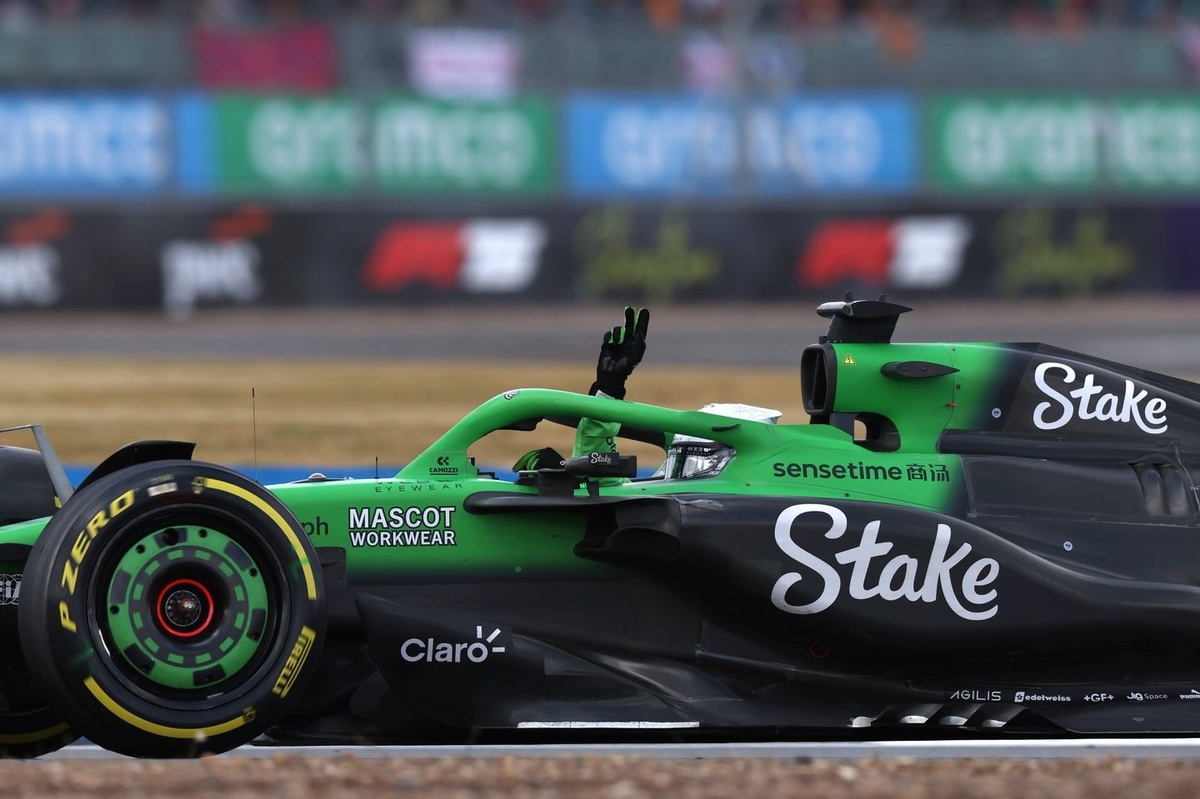Sometimes, you need to believe in fairy tales, even the ones that take the longest to come true, almost an entire career. On a rainy July afternoon soaked in magic, on a track steeped in legend, Nico Hulkenberg rewrote his story by stepping onto the Formula 1 podium for the first time.
For years, it had remained just an elusive dream, a finish line never crossed. But at the British Grand Prix, the German finally broke the spell, securing that long-awaited third place that had always slipped through his fingers, often leaving only the bitter taste of a missed opportunity.
You could talk about a wait that lasted 239 grands prix, but it’s more than just an updated statistic. It’s a genuine, well-earned achievement. It’s the victory of patient talent, of quiet consistency away from the spotlight, of someone who seized the moment even when it seemed impossible. Behind the Silverstone podium lies the very best of Hulkenberg.

Nico Hulkenberg, Sauber
Photo by: Simon Galloway / LAT Images via Getty Images
It almost seems paradoxical, especially considering that just the day before he had put in a lacklustre qualifying performance, far from the standards of a driver who, for years, made single-lap pace one of his strengths. Just like in Austria, another grand prix where he came back from the rear, he lacked that feeling with the front end, that essential confidence to attack through the corners.
And yet, what was expected to be a dry race turned, just before the start, into a wet contest – opening the door to new opportunities. And it’s exactly in these ever-changing conditions that you need to strike the right chord at the right moment, watching the sky and trusting in a touch of luck.
Hulkenberg was in constant communication with engineer Steven Petrik to determine the right calls. After reporting that the circuit was too damp to gamble on slicks – “too aggressive”, per Hulkenberg – he assumed his usual grid position. That call not to pit before the start to switch to slicks turned out to be the right one, setting off a chain reaction that ultimately led to the moment that truly changed the German’s race: the decision to switch early from the first to the second set of intermediates after nine laps, one that carries an intriguing backstory.
Despite the virtual safety cars that slowed the early pace, limiting the chance to clear the water from the track and accelerate the switch to slicks, it became clear the asphalt was drying quickly. For those who stayed on intermediates, this was the worst possible scenario, as the tyres began to wear rapidly.
Hulkenberg too was struggling to keep his car on track, trying to cool the tyres on the still wet sections. The wear was so rapid that, from his onboard camera, you could see rubber shavings flying off the front-left tyre – the most stressed one at Silverstone.
Yet few dared to switch to dry compounds at that stage, even though the track was clearly ready for slicks, as proven by Lance Stroll. During the second VSC, Aston Martin called the Canadian in for soft tyres, and he quickly regained the time lost in the pitstop. Hulkenberg was actually asked by Petrik to stop for mediums, but this was an instance where he chose to stay out, citing that the pace was too slow to realistically maintain slick tyre temperatures in the final sector.
What worried teams most was the expected return of rain within a few minutes, including at Sauber, bringing the risk of needing two pitstops in a short span. During lap 8, Hulkenberg was told rain would return about three laps later, re-wetting the track.
It was in this very context that the decisive behind-the-scenes moment unfolded. The team was considering putting on a second set of intermediates, since the returning rain would trouble all those who had already worn out their first set of wet tyres.

Nico Hulkenberg, Sauber
Photo by: Sam Bloxham / LAT Images via Getty Images
The key decision came on lap 9. While the team had instructed him to stay out and wait for more clarity on the weather, so as not to waste a second set of intermediates, Hulkenberg took matters into his own hands. He overruled the call, and dove into the pitlane at the last moment to fit fresh tyres. “These tyres are fucked,” he reported, adding: “Box. I’m coming to the box.”
Fortunately, the Sauber mechanics had been warned this might happen and were ready to act quickly, helped also by the favourable position of their garage at the end of the pitlane, just before the exit.
It was a decisive choice, because in those few laps with fresh tyres, Hulkenberg’s lap times improved dramatically. He even set the fastest time in the final sector, gaining over two seconds on drivers who had stayed out on used intermediates.
To give a concrete comparison: in that last sector alone, the German driver gained nearly three seconds on Lewis Hamilton, and kept gaining in the following lap, just as all the other drivers dived into the pits due to the returning rain.
That was where the magic happened: if Hulkenberg hadn’t pitted when he did, he wouldn’t have built enough of a gap to rejoin ahead of Hamilton, Pierre Gasly, and Fernando Alonso. Instead, he would’ve been stuck in traffic.
Those extra laps on fresh tyres proved crucial to leapfrog a crowded pack and build a podium finish he had chased and wanted at all costs especially since, in the second half of the race, he caught up to Stroll and widened the gap to Hamilton. This forced Ferrari to take risks with their own strategy, perhaps pitting a lap too early to go back to slicks.
Hulkenberg continued to be assertive on the radio; when it came to his own slick stop to respond to Hamilton, he asked for the medium given the lower grip and run time left in the race. This gave him that little bit more response in still difficult conditions; although the track had formed a dry line, threading the needle on every lap was still a high-wire act.
In this article
Gianluca D’Alessandro
Formula 1
Nico Hulkenberg
Sauber
Be the first to know and subscribe for real-time news email updates on these topics
Subscribe to news alerts






